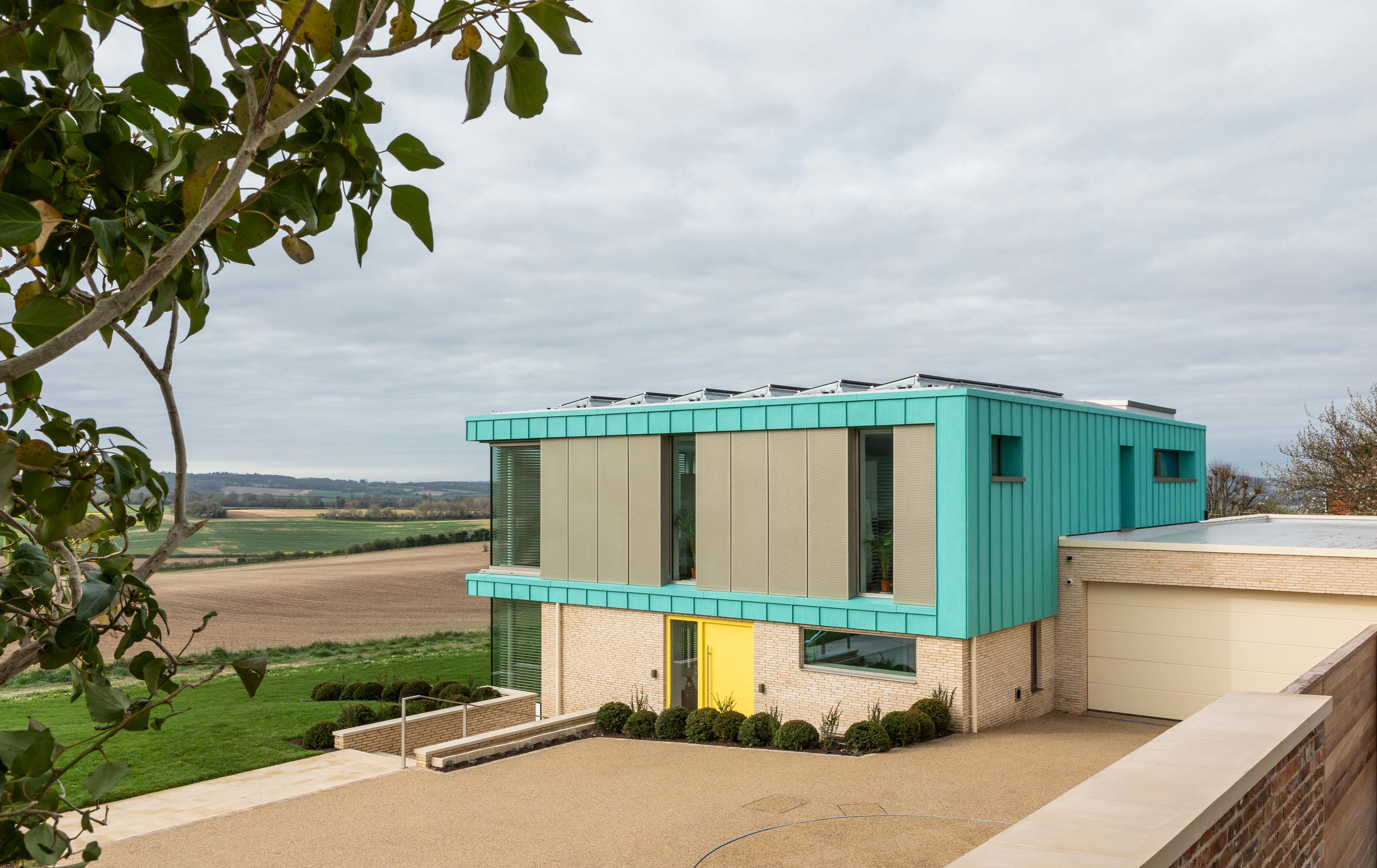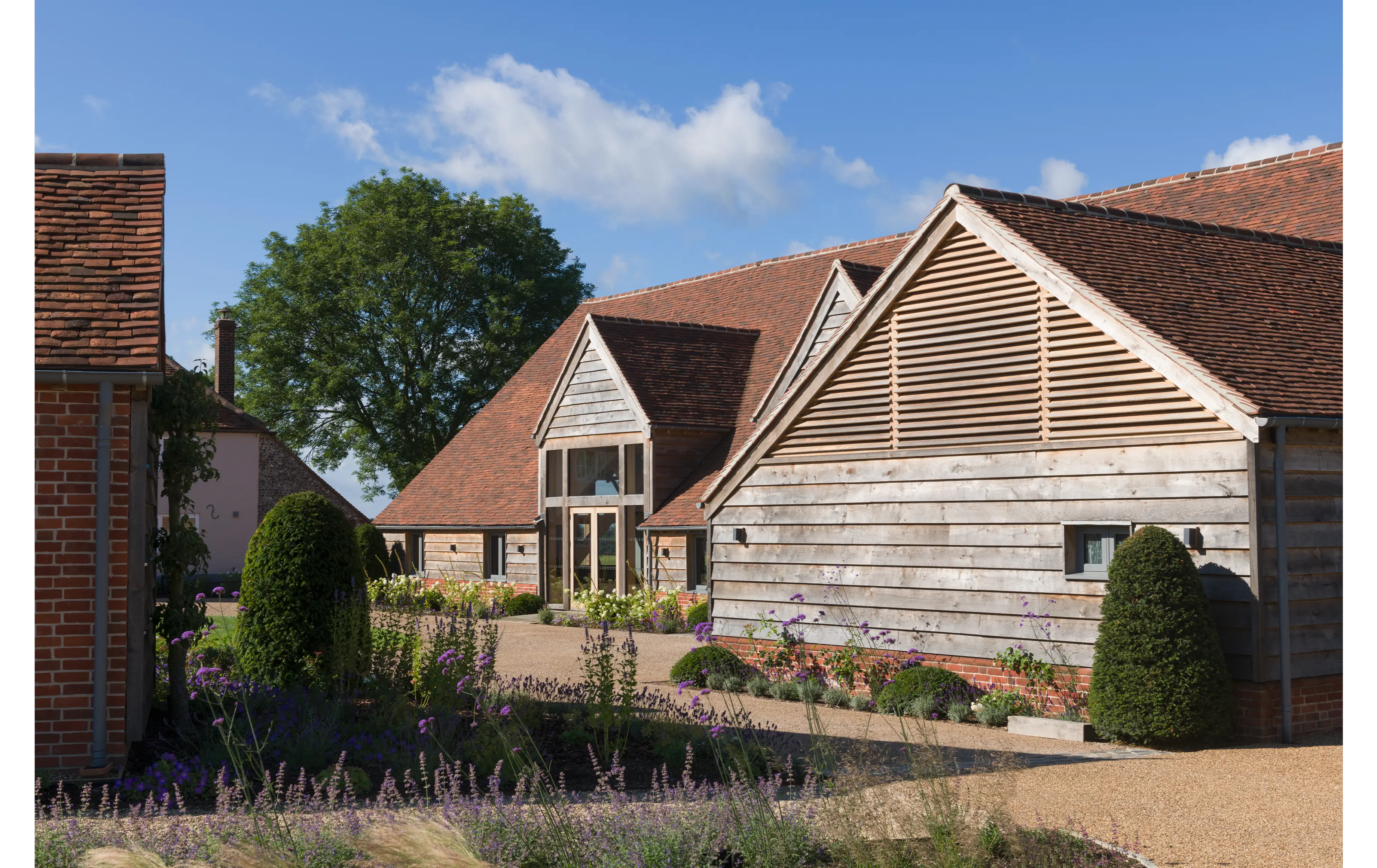Sustainability

Our Approach
Renowned for our work in this area, we work closely with our partners to deliver efficient buildings where we aim for the highest possible sustainability credentials. We recognise our responsibility extends beyond ‘first use’, and our projects are designed to last, with designs that maximise reuse and minimise impact and waste. By incorporating passive environmental measures and innovative technology, we find harmony with beautifully pragmatic solutions.
Based on the UN Sustainable Development Goals, we approach each project using the eight RIBA Sustainable Outcomes as a core framework:
- Net Zero Operational Carbon
- Net Zero Embodied Carbon
- Sustainable Water Cycle
- Sustainable Connectivity and Transport
- Sustainable Land Use and Ecology
- Good Health and Wellbeing
- Sustainable Communities and Social Value
- Sustainable Life Cycle Cost
For each project, we look to develop these principles with clients and design teams across the RIBA Plan of Work, ensuring they form a consistent and fundamental part of the project design from start to finish.
Our Commitments
Team Accreditations
As a champion for improving sustainability within the built environment, Robin focused on Sustainable Building Performance and Design for his Masters at Oxford Brookes University and completed the University of Cambridge Institute for Sustainable Leadership’s programme of study on Sustainable Real Estate: Creating a Better Built Environment.
Valentina is a talented architect and is accredited by the Passive House Institute, with expert knowledge in passive house design principles, detailing and specification.
Tom Perring is promoting practice capabilities in Life Cycle Assessments (LCA) and sustainable product specification through his research in conjunction with Nottingham University.

Retrofit
More than 70% of our projects are retrofits and we champion a retrofit first approach where appropriate. We work closely with clients and design teams to maximise the potential of existing buildings to help avoid rebuilding from scratch. This approach is not only cost-effective and generally less controversial, but also reduces waste and provides substantial embodied carbon savings.
The extent of a retrofit depends on many factors, including cost, condition and performance of the existing fabric. At Winnersh Triangle we were able to save an estimated 894,300 kgCO²e through the retention and reuse of the existing primary structure. This, combined with a new thermally efficient façade and central plant, led to a more efficient office and warehouse with an EPC of A and lower embodied carbon when compared to an equivalent new build.
Historic Context Retrofit
Through our holistic approach, we consider the treatment of traditional buildings differently to modern buildings, as they don’t require the same skills and material solutions. Through responsible retrofit we seek to deliver reductions in operational energy use while enhancing the traditional built environment and making a positive contribution to social and economic sustainability.
As an example, at Rackleys Farm, we repurposed a set of dilapidated agricultural buildings into a new events venue. Using local craftsmen and traditional materials, with modern fabric and services, this was a holistic project that balanced economic, social and environmental sustainability.
Sustainable New Builds

Where a new build is the most appropriate solution, we work closely with clients and partners to deliver efficient buildings that perform well. Incorporating passive environmental measures and innovative technology, we find the harmony in pragmatic solutions, aesthetics and economy.
At Hill View, for example, it was decided the best option was for the inefficient existing bungalow to be replaced with a new highly insulated dwelling. Using latest technologies we created a super-efficient building with significantly reduced operational carbon and running costs.
Our practice management is ISO accredited to ISO9001 (quality management) and ISO14001 (environmental management).
Co-Founder, Bremont


